Travel Guide
This Is Europe’s Top Hidden Gem This Winter: Christmas Markets & Medieval Charm
If you’re planning on flying across the pond this December to experience the seasonal markets, storybook towns blanketed in snow, and the Old World allure of it all, you might want to hold off on booking those flights to Germany until you read this.
Europe’s top gem in winter is not Neuschwanstein Castle in the Bavarian Alps, an overpriced ski resort in Chamonix, France, let alone the touristy Lauterbrunnen Valley in Switzerland:
It’s a magical city in southwest Poland known for its beautiful architecture, Christmas markets bursting with holiday cheer, and of course, over 600 tiny gnomes (yep, actual gnomes) hiding all over town. Just watch your step, or you might squash one!
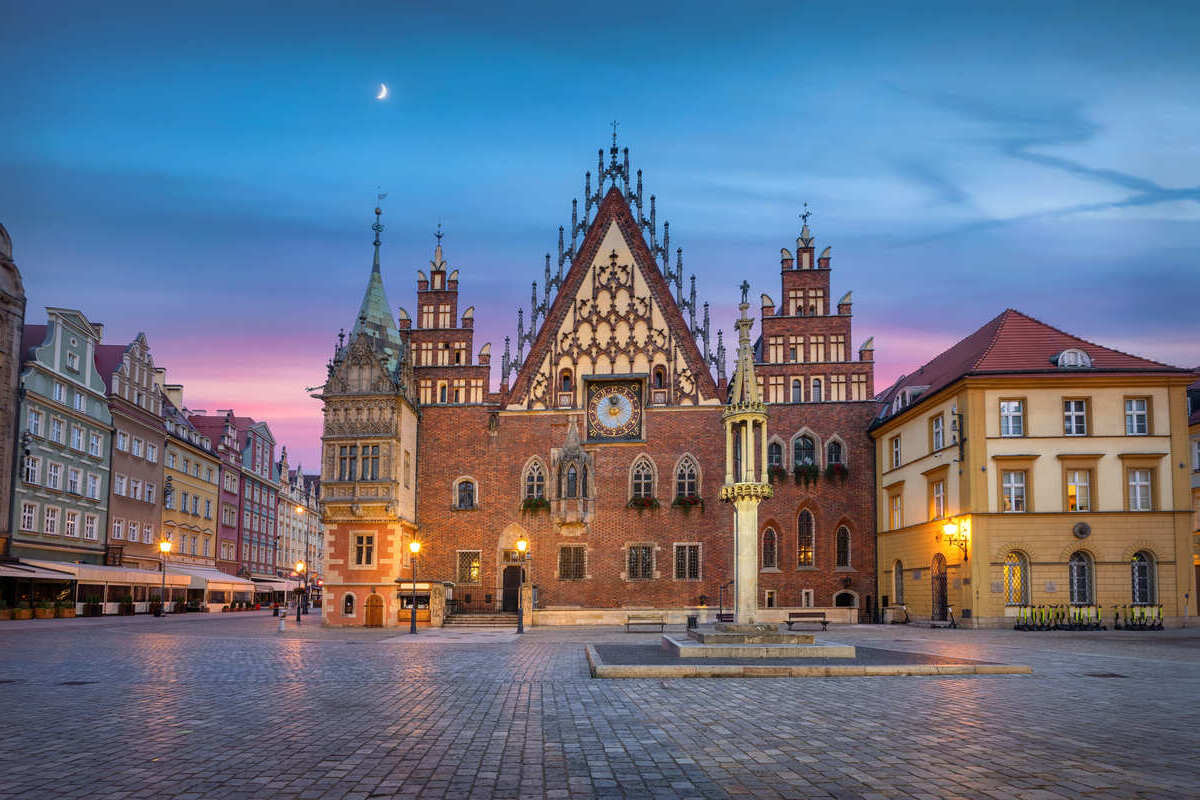
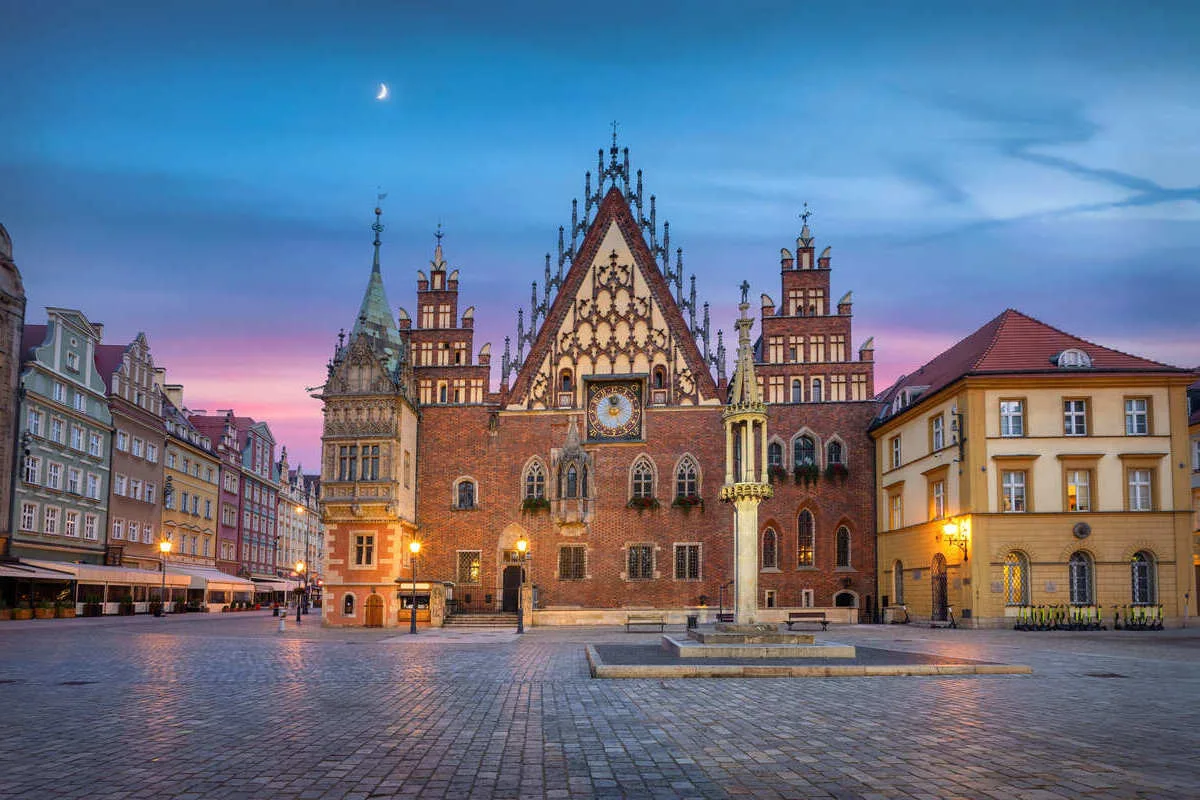
Forget Warsaw, Kraków: Winter In Wrocław Is Where It’s At
As the third-largest city in Poland and an important industrial hub of the historical region of Silesia, with over 673,000 inhabitants, you’d expect Wrocław to be anything but quaint and picturesque.
Unlike the sprawling Warsaw, however, it’s not modernist structures and skyscrapers that dominate the skyline. In fact, much of the Historic Center has been perfectly preserved from the Middle Ages, making it one of the largest and most beautiful in the continent.
Wrocław (which you’re probably mispronouncing in your head, but it’s read like Vrots-wahf) revolves around a picture-perfect Old Town, cut through with cobble-surfaced roads, and peppered with ornate buildings and traditional milk bars.
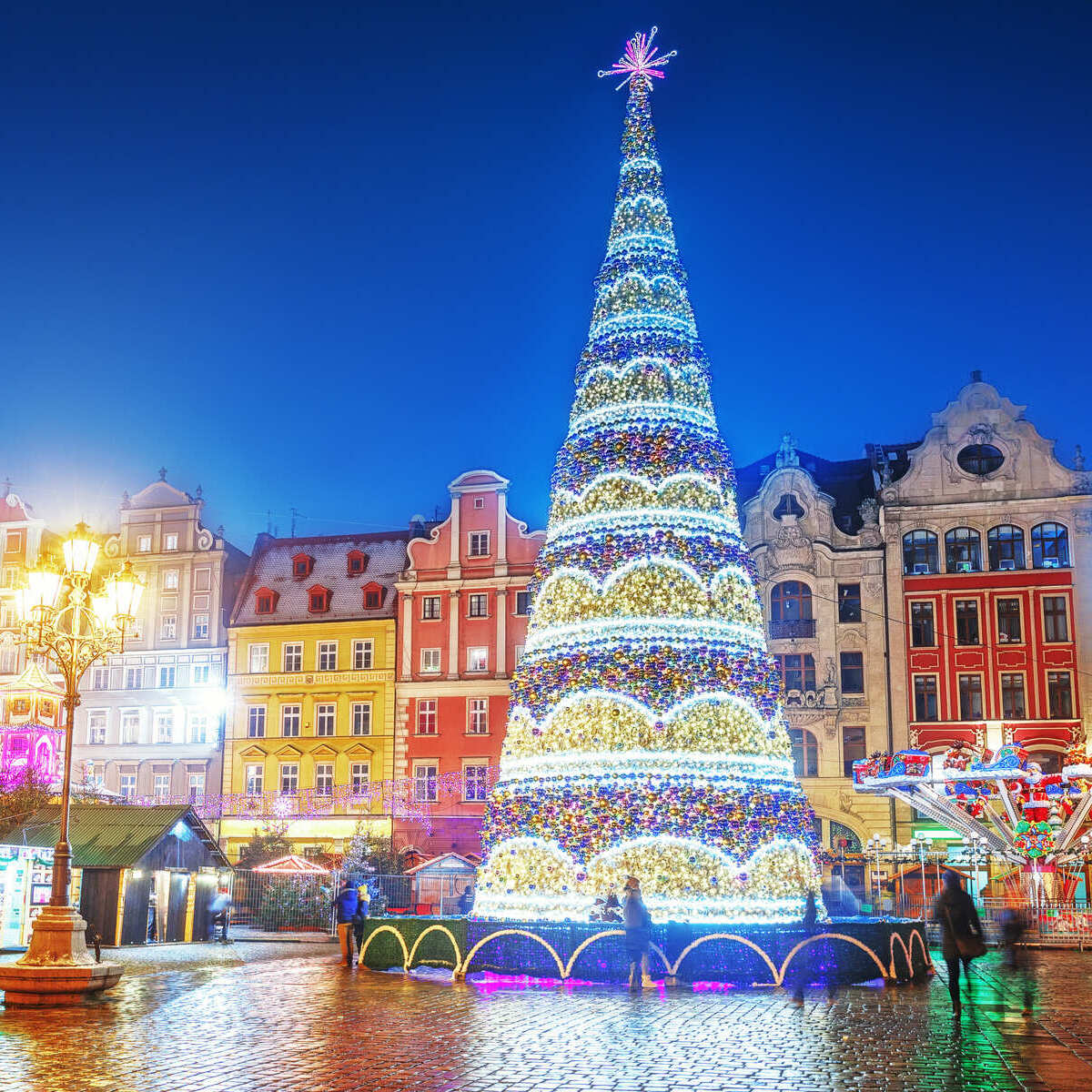

The main meeting point is Market Square, flanked by colorful townhouses and dominated by the Town Hall, a Gothic landmark with an elaborate facade built in the late 13th century, and a large Astronomical Clock that rivals Prague’s in beauty.
Experience The European Christmas Magic
In winter, the main Christmas market (known locally as Jarmark Bożonarodzeniowy, but don’t make us spell that out) is set up here, with wooden stalls galore, a towering tree, and a multi-level festive tower with animated figures and rotating tiers.
Of course, there’ll be plenty of mulled wine and every type of sausage you can name on offer, but this is Poland, after all, so make sure you sample some of the local wintery delicacies.
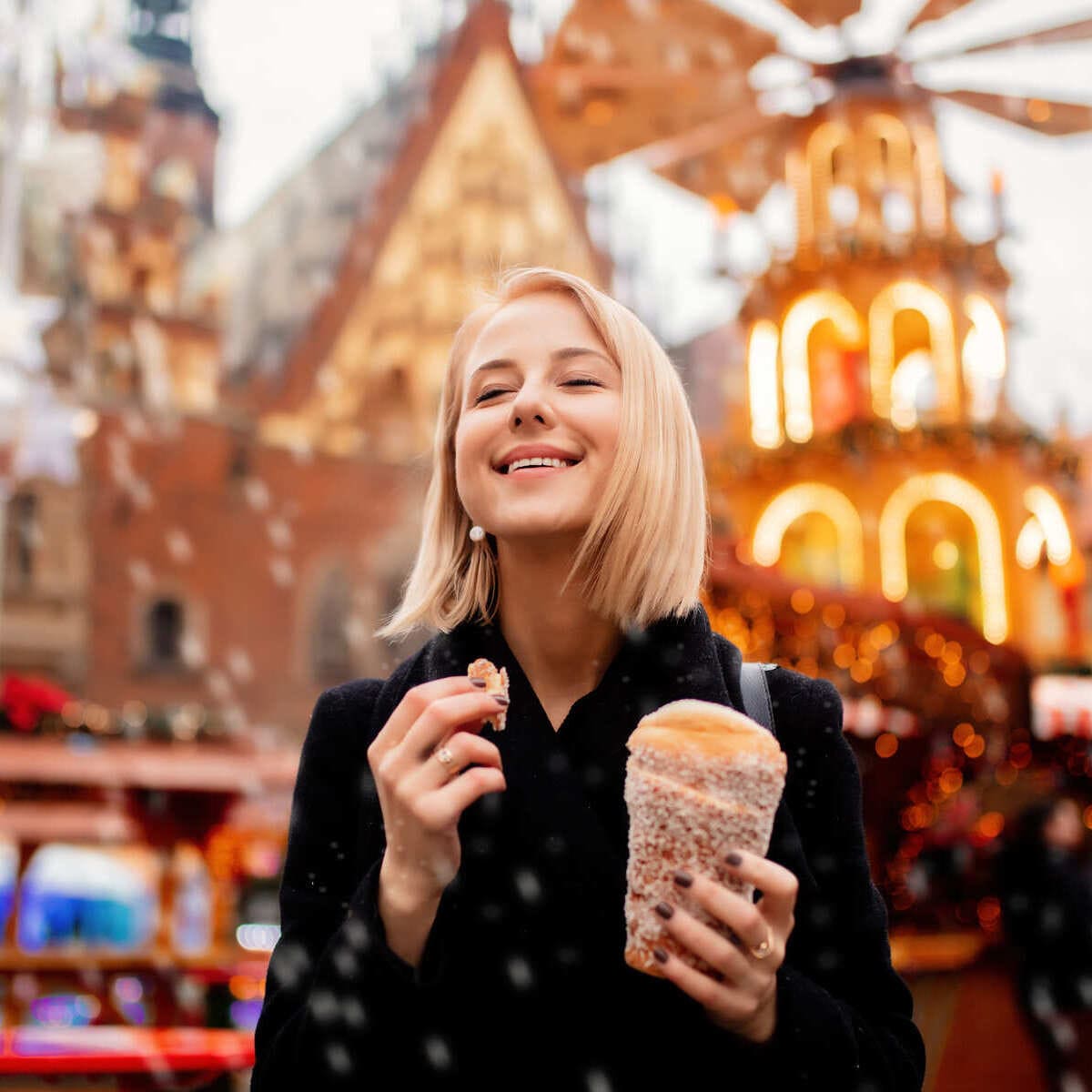

These include oscypek, smoked sheep cheese from the Tatra Mountains, that is typically served grilled with optional cranberry sauce, pierogi, soft meat and potato dumplings that taste even more heart-warming in the darker months, and bigos, or ‘hunter’s stew’.
It’s made with sauerkraut, cabbage, and meat, and it’s truly all the energy boost you need to brave the bitter cold.
Speaking of food, if you’re craving traditional Polish grub, SETKA is the place to go: a communist-themed milk bar on the edge of the Old Town, mostly frequented by locals, it serves all your Polish and Eastern European favorites in a no-frills setting.
A lunchtime menu here with a generous jug of fresh lemonade won’t cost you over 50 złoty, or roughly $13, but hey, we digress. Wrocław has delicious, affordable food, got it. What about the gnomes we mentioned earlier, though?
Gnomes, Gnomes Everywhere!

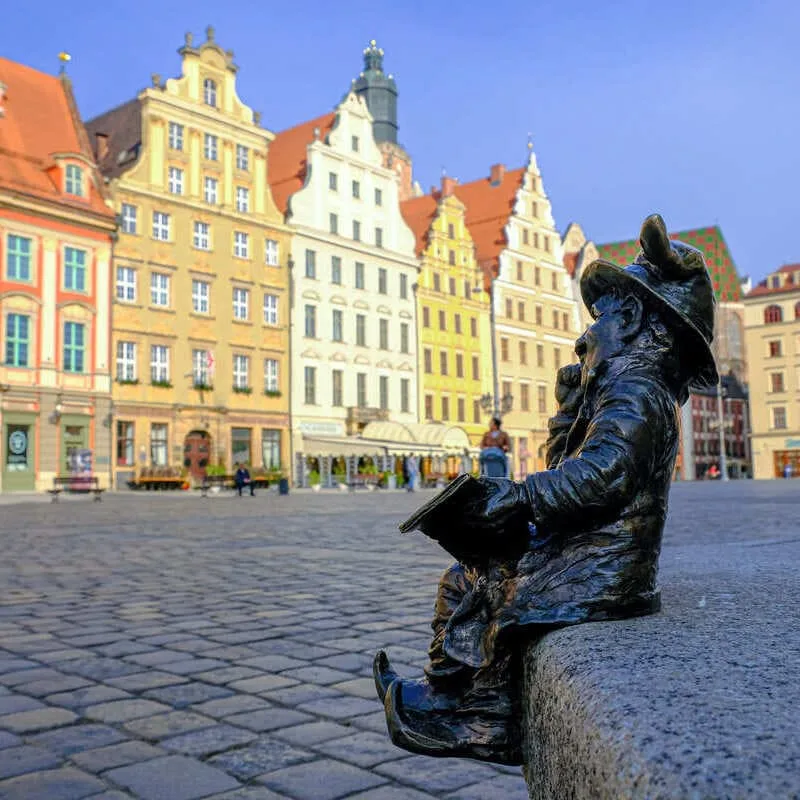
Well, if you’re wandering around Wrocław on your little sightseeing tour, let’s just say those are impossible to miss.
Maybe there’s a 12-inch-tall chocolatier gnome you’ll need to step over walking into a chocolate shop, or when you take out złoty from the nearest ATM to pay for those cash-only souvenirs at the Christmas Market, you might notice a duo of cheeky, tiny men conspiring to rob the bank.
You can’t even escape them at the pubs. Find them lying on the floor, absolutely plastered, but still holding on tight to their oversized beer pint.
They’re made of bronze, and most are tucked close to the ground, perched on curbs, or peeking from street corners, and good luck chasing all of them, as there are over 600 mini sculptures distributed around town.
The most iconic ones are up St. Mary Magdalene Church, an imposing medieval monument featuring two towers connected by an old bridge (the Penitent’s Bridge).
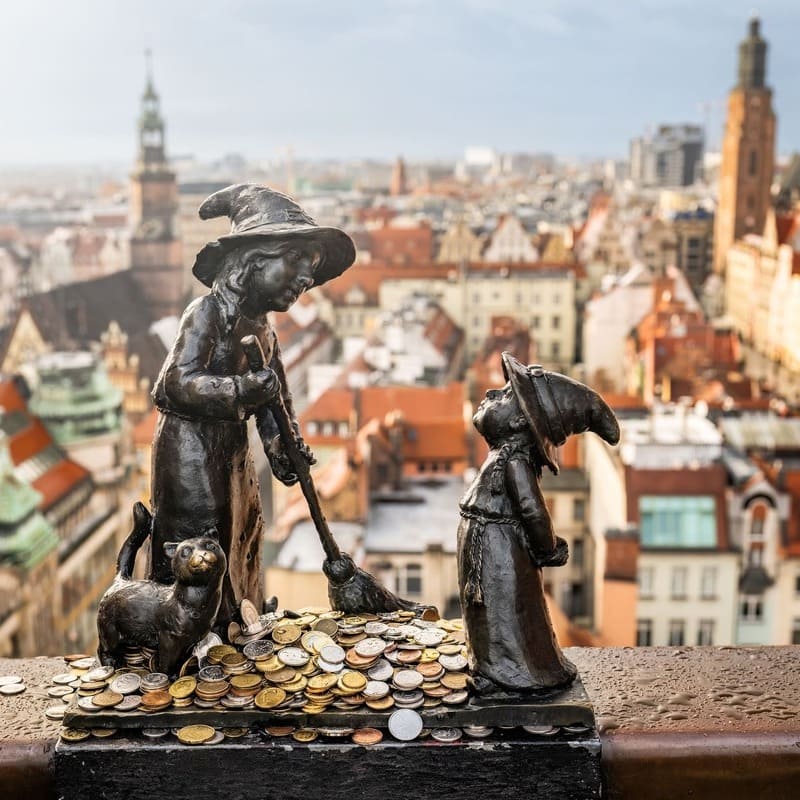

Placed on the balustrade, you’ll find two tiny gnome witches: a broom-yielding Tekla, a vain sorceress who refused to marry and do housework, and whose punishment was to sweep the bridge for eternity, and Martynka, a younger witch who was sent to help her.
As you pass the bridge, don’t forget to leave Tekla a coin for good fortune.
It All Started Here
Once you’re done photographing every gnome in sight—this could easily take the best part of a traveling day—make sure you head out of the busy center towards Cathedral Island, or Ostrów Tumski in Polish.
Despite being the oldest part of Wrocław, where the city was born, this area feels a lot quieter in comparison to Market Square, and with far fewer tourists.
The fast-flowing Oder River channels around it, with several bridges and overwater passageways; it’s no wonder Wrocław is sometimes called the ‘Polish Venice’.
At the heart of Cathedral Island, you can visit the Archcathedral of St. John the Baptist, (yet) another Gothic marvel dating back to the Middle Ages, Tumski Bridge, with padlock-covered guardrails, and make sure you wait until sundown to catch the lamplighter in his big cloak lighting the gas lamps by hand.
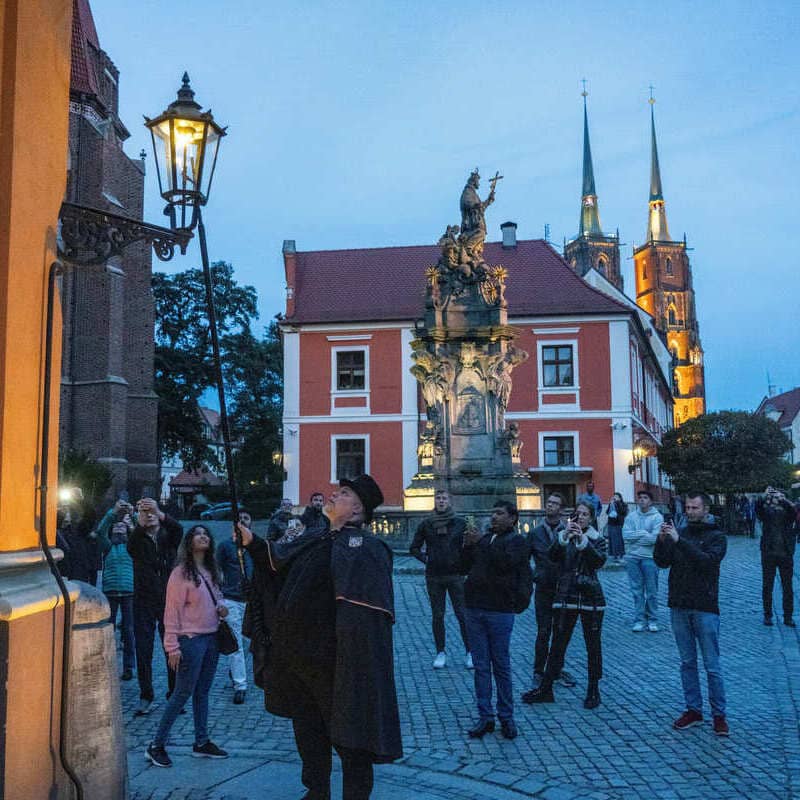

It’s nothing short of magical in wintertime.
Last but not least, if you’re looking for a place to stay within walking distance of all the main landmarks, and that won’t set you back hundreds of dollars, check out the Wyndham Wroclaw Old Town, a 4-star listing with nightly rates starting from only $87 per night.
Heading to Poland this winter? Discover other incredible ,lesser-known Polish destinations and get inspired here.
The Travel Off Path Advantage: Your Travel Toolkit
Subscribe To Our Latest Posts
Enter your email address to subscribe to Travel Off Path’s latest breaking travel news, straight to your inbox.

